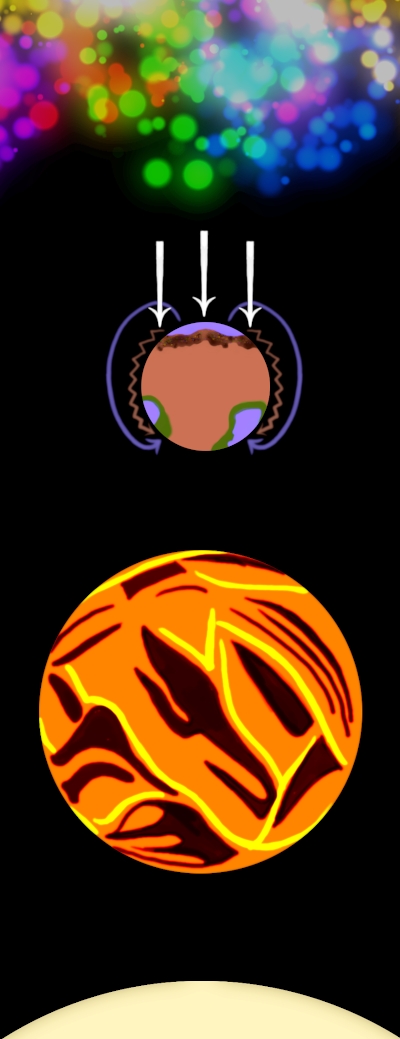The Heat Season
During summer, when Kasavoa stands between Larekon and Larevok, the latter's radiation has devastating effects on the outer side of Ranul.
For this reason, life is concentrated on Mustik Hamesi whereas Mustik Kogli is only inhabited during winter.
Manifestation
Destructive Effects
The photons impacting the moon's outer surface pass on part of their kinetic energy, causing the tectonic plates to shift towards the other side. Seismic activity increases strongly during that time. The rest of the photons' energy is absorbed by the sand and rock, serving as a catalyst for various chemical processes which convert the matter to a chaotic mix of different materials. Living tissue undergoes the same metamorphosis which is lethal in most cases. Another notable effect concerns the sea that formed where the tectonic plates are pushed apart. Zugakru, the Boiling Sea, heats up to the point that large volumes of water evaporate. This results in heavy rainfall on the opposite face of Ranul, which in turn leads to severe floodings.Beneficial Effects
As the energies are absorbed by the ground, many valuable resources are formed that the Rilsu harvest during the winter season. This includes certain minerals capable of storing high amounts of energy, which is used to power most modern technology. The increased rainfall and floodings during the Heat Season also help to hydrate and fertilize the oases on Mustik Hamesi.Localization
The whole of Ranul sees an increase in light and heat, but Mustik Kogli is affected most strongly, especially since it cannot cool down properly with the system's star sitting on the other side of Kasavoa.
Being mostly shielded from the radiation, either by Ranul itself or by Kasavoa, Mustik Hamesi heats up notably less. However, it still gets hit by some amount of radiation while the moon orbits its planet, and the side effects such as the increased rainfall and seismic activity greatly impact life on the inner face.




Comments